Take time to seek out the secrets of Nottinghamshire from its ice age mysteries to its little known Gothic masterpiece and you are in for a treat
After centuries of living and breathing the Robin Hood legend, in which the good guys rob the rich to give to the poor, Nottinghamshire wears its jewels modestly. Its wealth – whisper it softly – lies in its unpretentious red-brick villages and historical market towns, in a rich Civil War heritage, a cluster of outstanding ducal parks and a mysterious cave-dwelling past.
While the ‘merry men’ can be a little loud at times, the region more typically gives up its secrets quietly and only to those that seek them out. There is certainly no ‘come hither’ invitation on display to drivers on the M1 and the A1 – the two arterial routes between which most of Nottinghamshire is squeezed. Indeed, the most obvious landmarks from a distance are giant cooling towers oozing clouds of steam.
But once inside, the county takes on a more soothing appearance. Old mining and industrial areas have been transformed into open spaces and leisure amenities, leaving occasional pit-head winding wheels as nostalgic – even artistic – reminders of the collieries for which Nottinghamshire was once so famous. Eastwood, the former coalmining town and birthplace of D H Lawrence, has also been smartened up, if not made pretty. But not all of King Coal’s (Upton Sinclair’s novel about poor working class conditions) legacy has been reshaped. The creamy white Ancaster stone of Wollaton Hall, a fabulously flamboyant mansion completed in the 1580s, remains as testament to the metamorphic rock lying beneath the county.
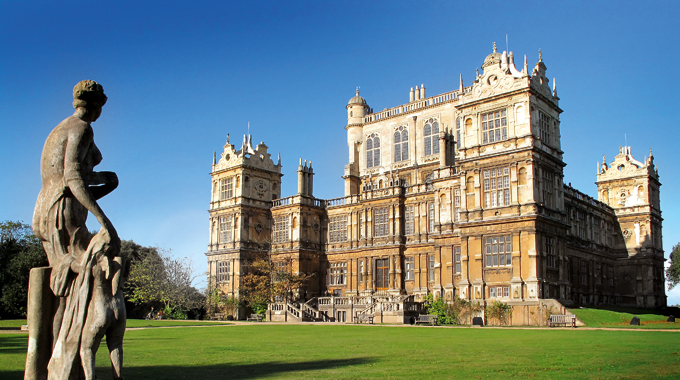
Wollaton Hall was built between 1580 and 1588 for Sir Francis Willoughby and his family, who made a fortune from mining. As a celebration of their success and wealth, they deemed their new home worthy of classical columns, turrets and towers and decorated it with busts of philosophers and mythological characters. It is still as impressive today, with its natural history and industrial museums, newly restored Tudor kitchens and period salons. The Hall itself is set in 525 acres of stunning parkland where walkers, joggers and even Segway tourers roam as freely as the estate’s herds of red and fallow deer.
It seems far removed from any industrial centre, yet Wollaton Hall and Deer Park is less than four miles from the centre of Nottingham, the self-styled ‘Queen of the Midlands’. The lofty label is reflected in the city’s grand public buildings, especially the Theatre Royal, Arkwright Building, Guildhall and dome-topped Council House.
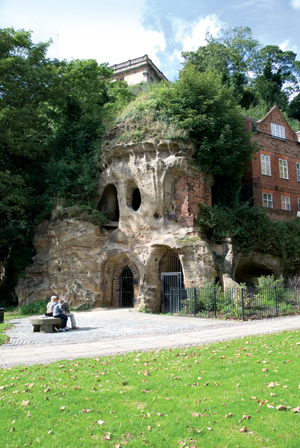
The latter is guarded by Leo and Oscar, two giant stone lions strategically placed on Market Square, the largest city square in the UK. Known to locals as Slab Square, Market Square was the scene of the Michaelmas Goose Fair from 1284 until the 1920s; the annual funfair is now held on the city outskirts at Forest Fields.
Aside from its civic collection, Nottingham’s best architectural beat is the Lace Market, home of England’s lace and hosiery industry in the second half of the 18th century. Now fully restored, this heritage quarter is packed with red brick mansions where lace goods were displayed, stored and sold. With its old gas lamps, iron railings, cobbled paths, gargoyles and period details, it is a lovely part of town to wander and relax in. It is also home to the Galleries of Justice, a popular visitor attraction housed in the old Shire Hall, scene of the last public execution in Nottingham in 1861.
The city’s above-ground architecture is impressive but so, too, is its below-ground heritage: a labyrinth of at least 450 man-made sandstone caves and passageways. Probably providing homes to early inhabitants, they have more recently been used as dungeons, wine cellars, air-raid shelters and storage areas. Today they can be accessed on guided tours.
It is a very different network to that found at Creswell Crags, some 25 miles to the north. Here, prehistoric bears, woolly rhinos and lions, all twice the size of their modern day descendants, eked out a harsh existence some 70,000 years ago before Neanderthals moved in. Tour guides take groups of visitors deep into the dark caves to view Ice Age rock art and the hand tools and skulls left behind.
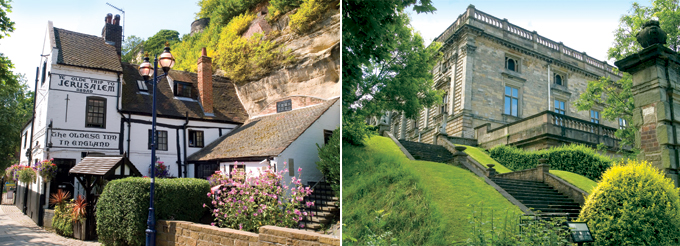
Back in Nottingham, the much-photographed Ye Olde Trip to Jerusalem is a lovely pub housed in a unique building that dates back to 1189 and is said to have provided hospitality to crusaders en route to the Holy Land. The Trip, as locals call it, promotes itself as the oldest pub in England, a claim hotly contested by two other Nottingham hostelries. It is more certainly one of the quirkiest with its tiny bars and alcoves cut into the sandstone rock behind and its beer cellar in a cave below. Among its many curiosities is the Cursed Galleon, a model ship now gathering dust in a glass case. Apparently death befalls anyone who cleans it.
Some 40m (130ft) above The Trip, balancing on a rocky outcrop, is Nottingham Castle, now a museum and art gallery. Its raised position offers superb views of the city and its gardens are a popular picnic spot. Sturdy and squat, the present building is not the Sheriff of Nottingham’s stronghold that most imagine; the earlier medieval castle was demolished by Cromwell following the execution of King Charles I who had raised his standard here in an act that signalled the start of the English Civil War.
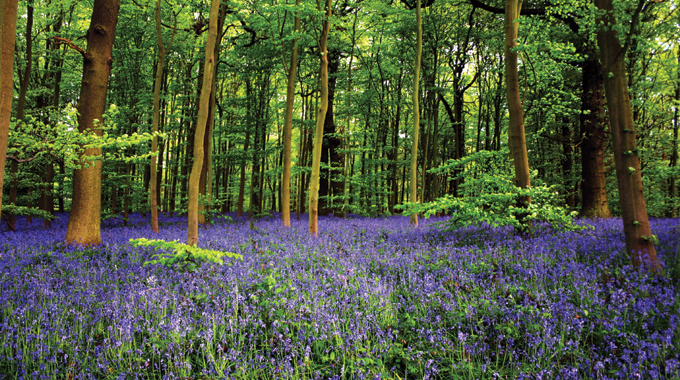
Yet it is the legend of Robin Hood, rather than the fate of King Charles, that draws visitors to Nottingham Castle and to the bronze statue of their romantic hero, inevitably shown striking an attitude with his bow and arrow. This is the most well-known depiction of the outlaw, but there is another in Edwinstowe, a village some 20 miles north, where the Robin legend goes into overdrive. Apart from the shops and service providers linking themselves to the folk heroes (Friar’s Lodge; Robin’s Den; the Royal Oak pub) there is a statue of Robin proposing to Marian just a stone’s throw from St Mary’s church, where the couple are said to have married.
Nearby, along a path leading through Sherwood Forest, is the Major Oak, a grisly looking ancient tree said to have been a favourite hideout of the Merry Men. Its great age – reported at between 500 and 1,000 years – is showing and its heavy branches have to be supported by wooden crutches.
Sherwood was a royal hunting ground until the 16th century when vast tracts of the forest were sold to powerful landowners and added to the estates of five dukes. This development resulted in one of the county’s greatest prizes: The Dukeries, a series of glorious neighbouring parks.

The area stretches from Sherwood Forest to Worksop, the so-called Gateway to The Dukeries (and also home to the charming 1930s time capsule of Mr Straw’s House). Its star turn is undoubtedly Clumber with its ornamental lake, pleasure gardens, a striking chapel and Europe’s longest double avenue of lime trees. Now cared for by the National Trust, its 3,800 acres are crisscrossed by forest and heath trails making it a popular space for families, cyclists and walkers.
Among the special spots tucked away within the estate is Barkers, the National Trust’s first fine dining restaurant, which opened last year, and a restored walled kitchen garden which supplies it with fresh produce.
The importance of flavour, therefore, is one of the key concerns for Head Gardener Chris Margave, but it is not the only focus for his team: “We want to make the garden a relaxing, interesting and educational experience for visitors but we also play a role in the conservation of neglected or rare varieties of fruit and vegetables.”
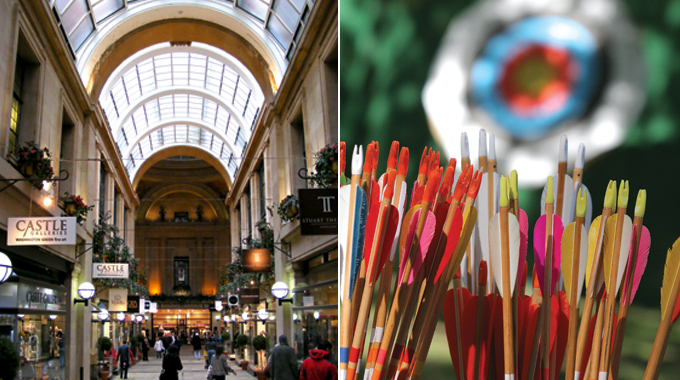
So the beds of the walled garden are home to the unusual, including sea kale, the Black Hamburg grape, and a variety of medlar (a russet-hued fruit once considered a delicacy) called Nottingham. Here, also, is a collection of 100 rhubarb varieties and a speciality stock of apples with a Nottinghamshire or regional pedigree, among them the Sisson’s Worksop Newton and, of course, the Bramley.
The famous cooking apple originates from Southwell, a town of village proportions with a secret of city proportions. Southwell Minster is probably the least well-known cathedral in the country despite its unique Rhenish capped twin towers being visible for miles around.
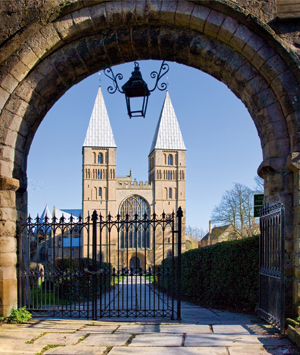
Southwell Workhouse, a unique 19th-century National Trust property, also holds a commanding position in the town. Starkly empty, its residents uncelebrated and its tale hardly cheering, it sits uncomfortably in the elegant surroundings of this genteel town but delivers a memorable and moving experience to visitors.
Rather more famous inhabitants of the town include the poet Byron. Although better known for his romantic pile at Newstead Abbey, an evocative confection of ruins at the southern edge of The Dukeries, he spent some of his teenage years in Southwell. King Charles I turns up in the town, too, this time spending his last night of freedom at the postcard-pretty Saracen’s Head Inn.
The Cavalier king also has connections to Newark, Southwell’s big neighbour and the most significant of East Nottinghamshire’s trio of appealing market towns (Retford and Bingham being the other two). Loyal to the king, the locals endured three sieges before surrendering to the Roundheads. Their mighty riverside castle was pounded to pieces but the ruins still strike an impressive pose beside the ancient six-arched bridge and landscaped gardens.
A big regional livestock market takes place in Newark on Wednesdays and general markets are held on the main square daily (except Tuesday), which is overlooked by the tall spire of St Mary Magdalene and surrounded by Georgian and Victorian buildings. However, it is as a centre for antiques that the town has become best known.
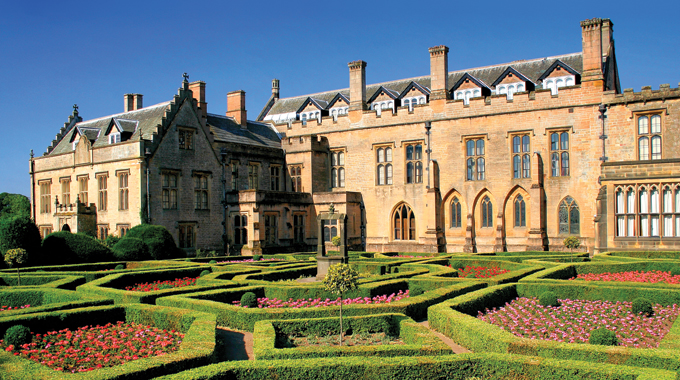
“This speciality seems to have developed quite organically over the last 50 years or so,” explains Christine Kavanagh, owner of No 1 Castlegate, a showroom for mainly 18th century furniture. “But it’s really taken off since the Antiques & Collectors Fair launched around 20 years ago. It’s now held six times a year, on the outskirts of town, and the summer event is the largest of its kind in Europe.” Kavanagh describes Newark as one of very few places in the country that supports a thriving antiques trade. “There’s a full range on offer,” she says. “That’s probably why it survives. With a bric-a-brac market on Thursday and at least 10 antique shops and specialised centres, it caters for both the enthusiastic browser and the avid collector.”
In typical Nottinghamshire style, Newark goes fairly quietly about its business, discreetly displaying its treasure trove to those that come calling. Subtlety is taken for granted in this county, perhaps to counter the brazen antics and celebrity of its most famous outlaw son.
Related articles
|
Click here to subscribe!
|

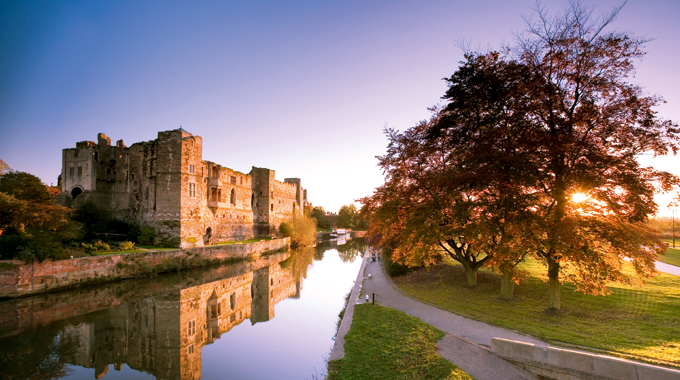

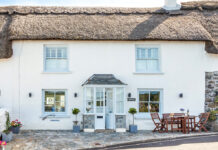



 © 2024
© 2024